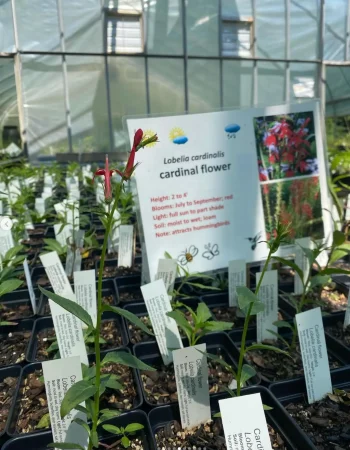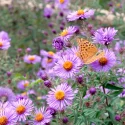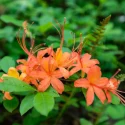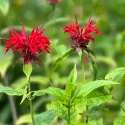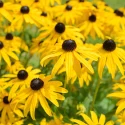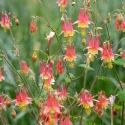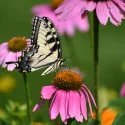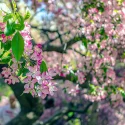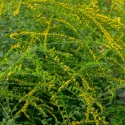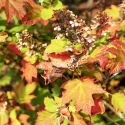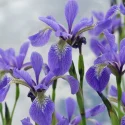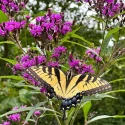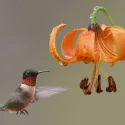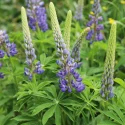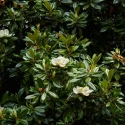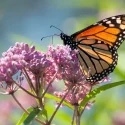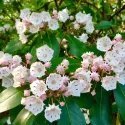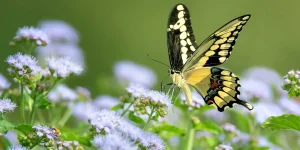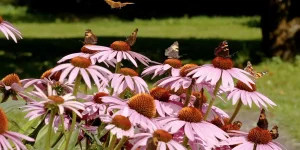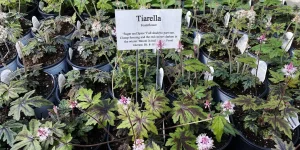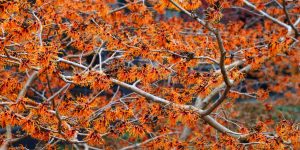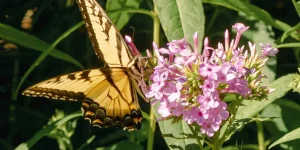Interview with Chesapeake Natives
Some stories prove how just a few people can make a huge impact. Take the Franklin Tree—discovered by naturalists John and William Bartram in the 1700s. After they collected seeds, this tree was never seen in the wild again. Today, every Franklin Tree descends from those few preserved seeds—a testament to how conservation efforts, big or small, can make a lasting impact.
This same dedication drives Chesapeake Natives. Led by co-Executive Directors Emilie and Kelly, the nonprofit has grown and distributed 75,000 native plants, all focused on Local Ecotype Native Species (LENS)—plants perfectly adapted to the Chesapeake Watershed.
We spoke with Kelly and Emilie to learn how they’re making it happen—and what keeps them inspired along the way.
Thank you both so much for the time! Could you tell us a little about Chesapeake Natives’ mission?
Chesapeake Natives’ mission is to promote, protect, and propagate local ecotype native species (LENS) plants of the Chesapeake Bay Watershed. We aim to restore landscapes with LENS, grown from wild, locally sourced seed, to support biodiversity. Our volunteer-powered nursery in Rosaryville State Park grows and distributes a wide range of LENS to the public, building a native plant movement to restore critical habitats.
Since our founding in 2005, we’ve distributed over 75,000 plants and grown a community of nearly 2,500 gardeners and conservationists across the region. As important, we have grown a diverse inventory – 200 straight LENS from a variety of local genetic sources, which we are always trying to diversify.
Wow. That is A LOT of plants.
We did the math—that’s distributing 10 plants a day, every day for twenty years.
Why focus on local ecotype native species (LENS)? What makes these plants so special?
Chesapeake Natives focuses on local ecotype native species (LENS) for the Chesapeake Bay Watershed because these plants are uniquely adapted to the local environment and critical for supporting biodiversity.
LENS are native plants whose genetic origins are local and wild, co-evolved with local insects and wildlife. They bloom at times that best support pollinators and thrive in the specific environmental conditions of the region.
The Chesapeake Bay Watershed, the largest estuary in North America, spans over 64,000 square miles and is home to more than 18 million people. LENS are ideal for native restoration, improving water and soil health, supporting local wildlife, and helping with stormwater management and carbon sequestration.
However, these plants are not widely available.
We fill this gap by growing and distributing over 200 species of LENS from our volunteer-powered nursery.
LENS plants sound like the gold standard for gardens. How do you decide which species to grow?
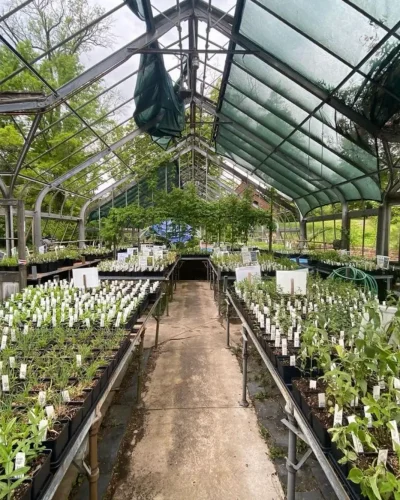
Our decisions are largely guided by the availability of local ecotype native species we can find in the wild. We prioritize gathering local ecotype seeds from plants native to the Chesapeake Bay watershed to ensure they thrive in the local environment.
While we do purchase a VERY small number of species from wholesale nurseries with whom we have strong relationships, we’re careful to only source plants that come from ecoregions within the watershed. Which means we annoyingly interrogate growers to find out provenance!
After 20 years of working with homeowners, state parks, schools, and other community organizations we’ve developed a good sense of what grows best in this region and what’s most popular. We’re always listening to feedback and paying attention to what people ask for the most.
LENS reminds me of the “straight species” vs. cultivar or nativar debate. How do you break down the difference?
Native plants are species that naturally occur in a specific region or ecosystem without human intervention. They have adapted to local environmental conditions, making them crucial for supporting the local ecosystem.
In contrast, cultivars are plants that have been intentionally selected and bred for specific desirable traits, such as color, size, or disease resistance, and they may not be native to the region.
Native plants typically exhibit a wide genetic diversity, which enhances their resilience to diseases and pests. Cultivars often have reduced genetic diversity, making them more susceptible to such issues. Additionally, cultivars may not provide the same ecological benefits as native plants, lacking the necessary nutrients and habitats that local wildlife requires.
Native plants typically exhibit a wide genetic diversity, which enhances their resilience to diseases and pests.
While cultivars can be visually appealing, I encourage gardeners to consider the broader ecological impact of their choices. Planting straight species is more beneficial for local ecosystems, supporting biodiversity and promoting environmental health.
Thanks for that thoughtful breakdown. Many other organizations, like Wild Ones, agree with you.
Now, I’d like to shift and ask for some planting tips.
After growing 75k plants, you must have some excellent advice for beginner gardeners.
What common mistakes do you see new gardeners make when planting natives, and how can they avoid them?
Plant for the garden you have—not the garden you want or wish you had. They might choose plants they love without understanding if they’ll thrive in the available light, soil, or moisture. This often leads to disappointment when plants don’t survive.
Another issue is starting with too large of a space, which can quickly become overwhelming and unmanageable. We encourage beginners to start small and assess their garden’s conditions before planting.
However, gardening is a learning experience, and mistakes are part of the journey. Every setback is an opportunity to understand the garden better. Patience is key, as native plants take time to establish but ultimately thrive with less maintenance.
Gardening is a learning experience, and mistakes are part of the journey.
Can you recommend a few native plants that are easy to grow and maintain for those just starting out in the Chesapeake Bay area?
Just a few?? So many are easy to grow so I will recommend some based on different site conditions. Native plants are the best.
Native plants for beginners
Chesapeake Native’s Picks
Full Sun, Dry Soil:
- Spotted Bee Balm (Monarda punctata)
- Black-eyed Susan (Rudbeckia hirta)
- Purple Lovegrass (Eragrostis spectabilis)
Full Sun, Moist Soil:
- Clustered Mountain Mint (Pycnanthemum muticum)
- Blue Mistflower (Conoclinium coelestinum)
Shade, Dry Shade:
- Red Columbine (Aquilegia canadensis)
- Whitewood Aster (Eurybia divaricata)
- Alum Root (Heuchera americana)
Shade, Moist Soil:
- Golden Ragwort (Packers aurea)
- Indian Wood Oats (Chasmanthium latifloium)
Honorable mention goes to Lyre Leaf Sage (Salvia lyrata). One of the best native plants out there, in our opinion.
Thank you so much for those recs! Speaking of recommendations…
Are there any hidden gems or must-visit gardens in the Chesapeake region where beginners can find inspiration for native planting?
- Glenstone
- Delaware Botanic Gardens
- Cylburn Arboretum
- Our nursery! We have multiple demonstration gardens for people to check out.
Finally, this may seem like a bit of an odd suggestion, but the Mount Rainier area of Prince George’s County has an extensive native plant network and several homes have native plants bursting at the property lines. I would suggest taking a drive in the area, you can’t miss the yards with native gardens!
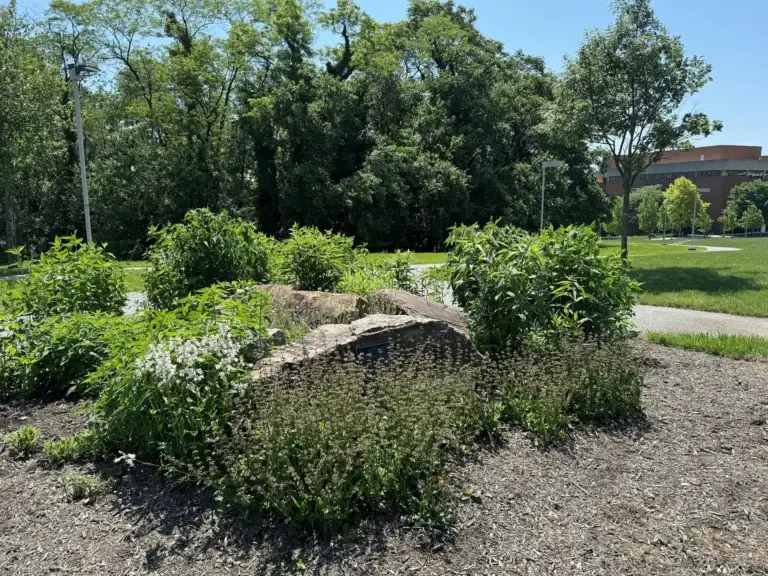
Do you have any favorite resources, such as books, websites, or social accounts?
Online resources:
- Maryland Area Gardening for the Environmentally Conscious Facebook Group
- Also @chesapeakenativesinc on Instagram and Facebook (obviously 🙂)
- Nativeplantcenter.net AMAZING Resource!
- USFW Native Plants for Wildlife Habitat and Conservation Landscaping (PDF)
- Let your garden grow wild Ted Talk by Rebecca McMackin
- Chesapeake Bay Landscape Professional Directory
Books:
- The Know Maintenance Perennial Garden, Roy Diblik
- Planting in a Post-Wild World, Thomas Rainer & Claudia West
- Garden Revolution, Larry Weaner
- Bringing Nature Home, Doug Tallamy
We could list resources all day, there are so many out there. If you are looking for something specific that is not listed here, please contact us, and we can try to point you in the right direction!
What a stellar list—thank you! Do you have any final thoughts or encouragement for those starting their own native gardens?
You can do it! Starting your own native plant garden may seem a bit overwhelming at first, but there are countless resources and supportive individuals in the native plant community who are eager to help you along the way. Remember, it’s perfectly normal to face some challenges—if a plant doesn’t thrive or completely dies, don’t be discouraged!
Experimenting with different plants and discovering what works best in your garden can be one of the most rewarding aspects of gardening. Embrace the journey, and enjoy the beauty and benefits that native plants bring to your space! You’ve got this!
Thanks again, Kelly and Emilie! I can’t wait to road trip and visit Chesapeake Natives in the future. Until then, happy planting!
Further information
Cheasapeake Natives Nursery
9640 Rosaryville Road
Upper Marlboro, Maryland 20772
(240) 326-3062 [email protected]
Instagram | Facebook
